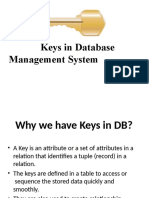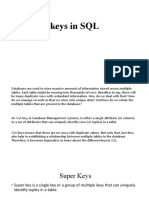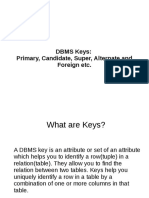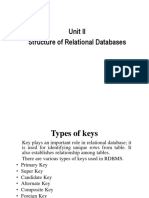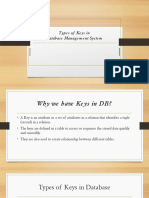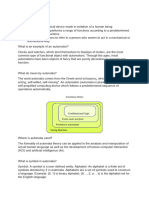0% found this document useful (0 votes)
101 views8 pagesDatabase Key Types Explained
The document discusses different types of keys used in database management including primary keys, candidate keys, super keys, foreign keys, alternate keys, composite keys, and artificial keys. Primary keys uniquely identify records and are chosen from candidate keys. Foreign keys link tables. Super keys can also uniquely identify records but are not as optimal as candidate keys. Composite keys use multiple attributes as the primary key.
Uploaded by
coolscools123Copyright
© © All Rights Reserved
We take content rights seriously. If you suspect this is your content, claim it here.
Available Formats
Download as DOCX, PDF, TXT or read online on Scribd
0% found this document useful (0 votes)
101 views8 pagesDatabase Key Types Explained
The document discusses different types of keys used in database management including primary keys, candidate keys, super keys, foreign keys, alternate keys, composite keys, and artificial keys. Primary keys uniquely identify records and are chosen from candidate keys. Foreign keys link tables. Super keys can also uniquely identify records but are not as optimal as candidate keys. Composite keys use multiple attributes as the primary key.
Uploaded by
coolscools123Copyright
© © All Rights Reserved
We take content rights seriously. If you suspect this is your content, claim it here.
Available Formats
Download as DOCX, PDF, TXT or read online on Scribd
/ 8











































